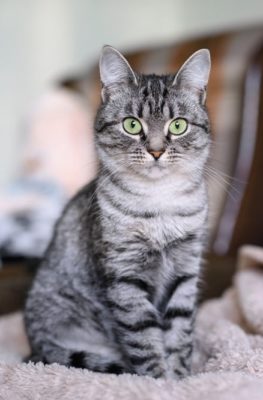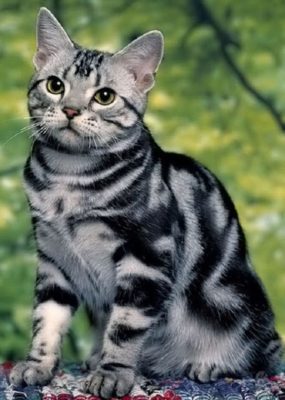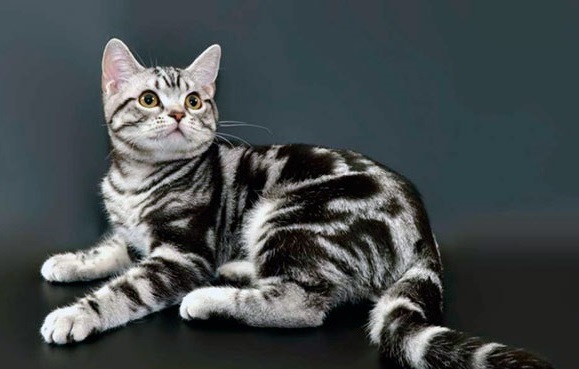American Shorthair
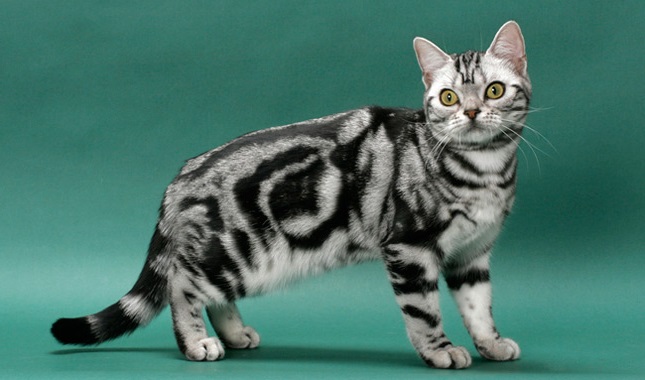
The main distinguishing quality of the breed is that they are unobtrusive. They love the company of family members but are not afraid of solitude. Therefore, they are well suited for people who have a busy work schedule and spend a lot of time away from home.
Table of Contents
Breed Information
| Origin | United States |
| Size | Males up to 40 cm Females up to 38 cm |
| Weight | Males 5-7 kg Females 2.5-5.5 kg |
| Fur Type | Short-haired |
| Color | Any color variations are possible |
| Lifestyle | Indoors |
| Lifespan | 15-17 years |
| FIFe Classification | – |
| WCF Classification | Group 3: “Short-haired”. Breed designation – ASH* |
| TICA Classification | AS |
| Group | Short-haired cats |
| Price | $600-1200 |
Breed Photos
Origin History
According to the sailors’ records, which have reached us since 1609 – the American Shorthair cat refers to European cats’ descendants. They were brought to North America by passengers of the famous ship “Mayflower”. There, cats were used as protectors of the ship from rodents.
Because of climate change, the cats had to adapt quickly to other living conditions. The colonists who founded the settlement were interested in breeding a breed of cat that would help them chase away rats and mice. The American Shorthair cat became the indispensable assistant of the settlers on their farms and ranches.
Initially, the formation of the breed took its course. No one cared about the exterior and purebred pedigree of the breed. In 1896, the American Shorthair cat was first shown at the Second Annual Show at Madison Square Garden. The results of the long breeding effort did not bear fruit until 1904.
The CFA (Cat Fanciers’ Association) officially registered the American Shorthair cat’s first representative in 1906. Then the breed received the first standard and the name “domestic shorthair”. The modern name “American Shorthair” was given to the breed in 1966.
Previously, the American Shorthair cat was valued solely for its working qualities. Now the breed has fully adapted to domestic life and has gained popularity in its homeland and Europe. The American Shorthair is recognized by all kinds of North American cat registries.
Appearance
The appearance of the American Shorthair tells us of its rich hunting background. Its well-developed musculature and harmonious build give it stamina and agility. The body is of medium size, balanced, and slightly rounded. The length and width of the head are about equal; the head is square. In the profile, you can see that the frontal part of the skull is slightly convex. The transition from forehead to muzzle is well defined. The muzzle is rather broad, with puffy cheeks. The ears are small and rounded, set wide.
The eyes are large and round. The distance between them corresponds to the width of the eye itself. According to the breed standard, eye color depends on the color. Orange iris color in most colors, except for silver (green eyes are characteristic for these animals). Cats of solid white color are most often found with blue eyes. The neck is strong and of medium size. Limbs with weighted musculature. The tail is located at the back, thick at the base, and tapering towards the end. The coat is short and very dense.
Allowable Colors: The American Shorthair has about 60 different colors. These are both monochrome and spotted, smoky colors and tabby colors. The most popular is recognized as silver marbled coat color. A cat with this color can be seen in an advertisement for Whiskas food.
Character
The main distinguishing quality of the breed is that they are unobtrusive. They love the company of family members but are not afraid of solitude. Therefore, they are well suited for people who have a busy work schedule and spend a lot of time away from home.
American Shorthair cats are balanced and friendly. They are also tolerant of excessive attention from a child. They would rather snuggle on the couch than show mischief and jump around the apartment. They like to watch everything from the sidelines without attracting extra attention. They are also not prone to frequent meowing. The American Shorthair cat is used to express its emotions through facial expressions, not through its voice.
The attitude to dogs is neutral, which cannot be said about the attitude to small animals. Here the developed hunting instinct is to blame. Therefore, you should observe the reaction of the American Shorthair to a parrot or hamster. If necessary, it is better to secure small animals and not keep them close to the cat. It treats strangers calmly and intelligently.
Care
The coat of an American Shorthair does not need complicated care. It is quite thick but pliable. Combining it once a week is enough. You should also refrain from frequent water procedures – American Shorthair does not like it.
The breed is clean, so wiping the cat with a damp towel once in a while will be enough. Pay attention to their eyes and ears several times a week. It is not a waste of money to buy a scratching post for your pet. This way, you can trim the cat’s nails less frequently, about twice a month.
Education
Owners of the American Shorthair note the good intelligence of the cat. It is quite intelligent and obedient but prone to some stubbornness and independence. To raise the cat without torture – you should build training in the form of a game. Remember that any training must be based on a relationship of trust; otherwise, it will not work.
Common Diseases
The good health of the American Shorthair could be the envy of anyone. Severe hereditary diseases for the breed have not been observed. However, there is a risk of some diseases:
- obesity;
- hypertrophic cardiomyopathy;
- kidney dysfunction.
Nutrition
When formulating a diet for an American Shorthair, give preference to low-fat foods. It is worth doing to avoid health problems, as the breed is prone to gaining excess weight. You will have to control the portion size strictly. The best option is a balanced, premium dry food for medium cat breeds.
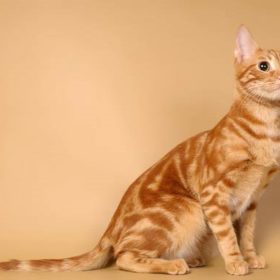 Anatolian Cat
Anatolian Cat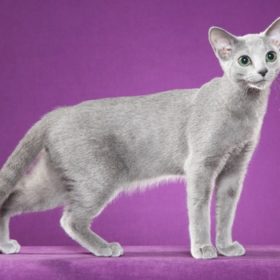 Russian Blue
Russian Blue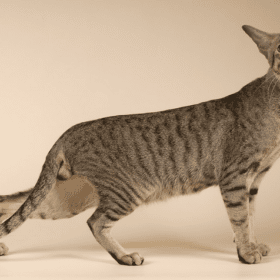 Oriental Shorthair
Oriental Shorthair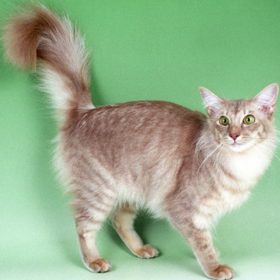 Javanese
Javanese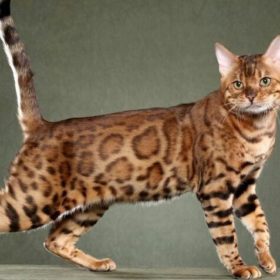 California Spangled
California Spangled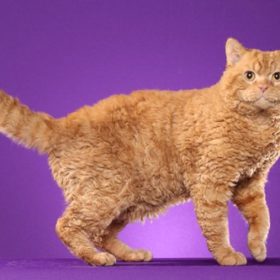 Selkirk Rex Shorthair
Selkirk Rex Shorthair